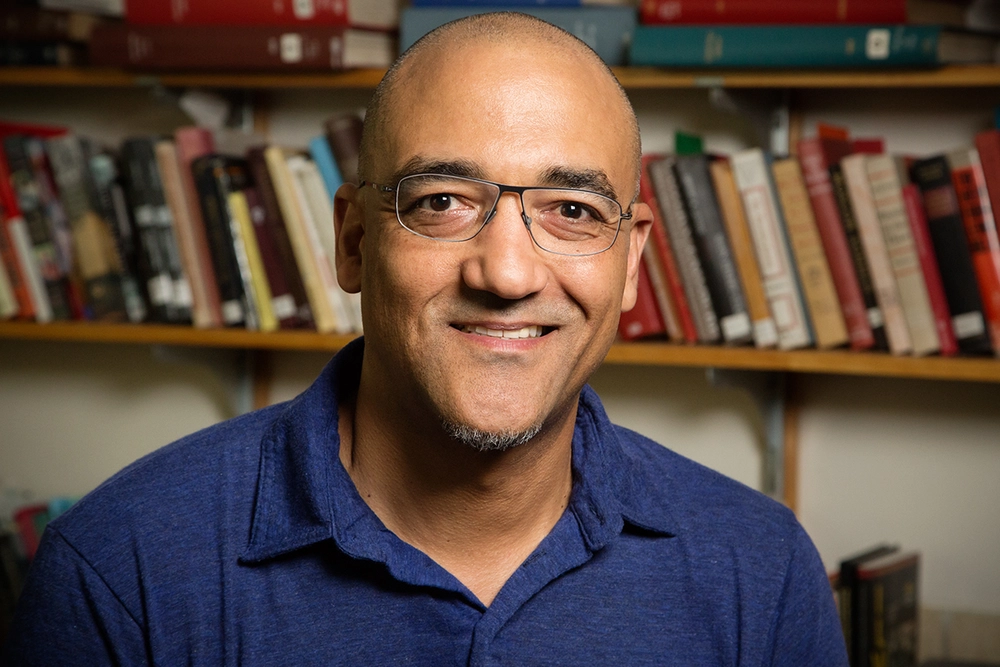
The Stonewall riots broke out 50 years ago this month when the patrons of a popular gay bar in New York City pushed back against a raid by police, sparking days of protest and, many believe, the modern gay rights movement. Illinois history professor Kevin Mumford focuses on both the civil rights and gay rights movements, has advised the National Park Service on its Stonewall National Monument, and is finishing a short history of the event. He spoke with News Bureau social sciences editor Craig Chamberlain.
This event is usually referred to as the Stonewall riots, and yet the word “riots” leaves a lot to the imagination. What happened?
I have issues with the term “riots,” but Stonewall has come to denote a major act of resistance to police harassment by the gay community. The police raided the Stonewall Inn on the pretense that the club had violated licensing ordinances, but it was part of a pattern by city government and law enforcement of pandering to the public by “cleaning up” vice and locking up “faggots.”
Back then, during the typical raid, the mostly male patrons shielded their faces, desperately hiding from cameras. Public exposure of one’s homosexuality was devastating – it could ruin reputations and destroy careers. But on this night, a handful of patrons resisted arrest, others tossed bottles and rocks, and others screamed and hit back at the police.
As these unruly patrons were carted off to jail, more LGBT onlookers filled in to resist the police, and the next day more gay men arrived at the now-shuttered bar. It was enough of a disturbance that The New York Times covered it. Over the subsequent months and years, more and more gay men joined in the outrage against years of police abuse and of societal stigma more generally.
It shows how visible Stonewall has become in current times that the New York Police Department, earlier this month, issued an official apology to the gay community for its actions in the raid and the uprising.
Why is it now often regarded as such a pivotal moment?
There is a long debate about Stonewall as a historical watershed. By any measure, much more street activism appeared in New York, sparking similar organizing in major cities, mostly on the coasts. For the participants, the Stonewall moment was a revelation if not a revolution – everything seemed to change overnight. But historians have also situated the riots as a phase in a movement, and emphasize that movements don’t happen spontaneously. They point to years of homosexual conferences, anonymous journalism and super-respectable public pickets – mostly seeking to demonstrate the “normalcy” of lesbians and gay men.
From my perspective, the context for Stonewall is really important: This was also the era of Black Power, and of years of extremely violent clashes between African Americans and overwhelmingly white police. Two years earlier, riots in nearby Newark, about which I have written a book, raged on for five days. Stonewall rebels spoke of the Newark riots at the time. So the tactic of aggressive protest and the riot were fully circulating in the culture, and it is not much of a leap to see how “queers” – including black gay men – would understand their resistance to policing in terms of a riot.
What’s often missing from the story of Stonewall?
First, until quite recently, most scholars downplayed the influence of younger, working-class and trans people, and people of color, in the uprising. The original flash of rebellion quickly spawned an elite, white, educated leadership all too ready to take credit and then dismiss the marginalized participants.
From a historical viewpoint, a major impact of the Stonewall moment has been a new visibility and collective consciousness. Perhaps the lasting outcome of that night was the organizing of the first Christopher Street Parade, followed in quick succession by pride parades in major cities and towns across the nation. This collective refusal to hide became a turning point, and so too did the new political tactic of “coming out.” Declaring one’s sexual identity was crucial to moving to the next stage of activism.
Therefore, the public sphere became a key site of mobilization, which expanded to streets and parks around the world, from the Netherlands to Cuba. According to media reports, more than a million turned out for last year’s Pride March in Chicago.
What might be missing or overlooked in the history of LGBT rights?
In addressing a convocation a couple of years ago, I chose to reflect on how the nation had moved from a brutal obsession with prohibiting black-white intimate relations to relative acceptance, and that in a shorter time, most Americans came to support the right of same-sex couples to marry. Now transgender students are challenged on every front.
This new generation represents some of our best hopes for building a society in which everybody has liberty, security and dignity. I guess that’s what the ragtag crowd at Stonewall fought back for 50 years ago, and their audacity and courage really ought to be a deep source of national pride.
Story reprinted from original publication by Illinois News Bureau.